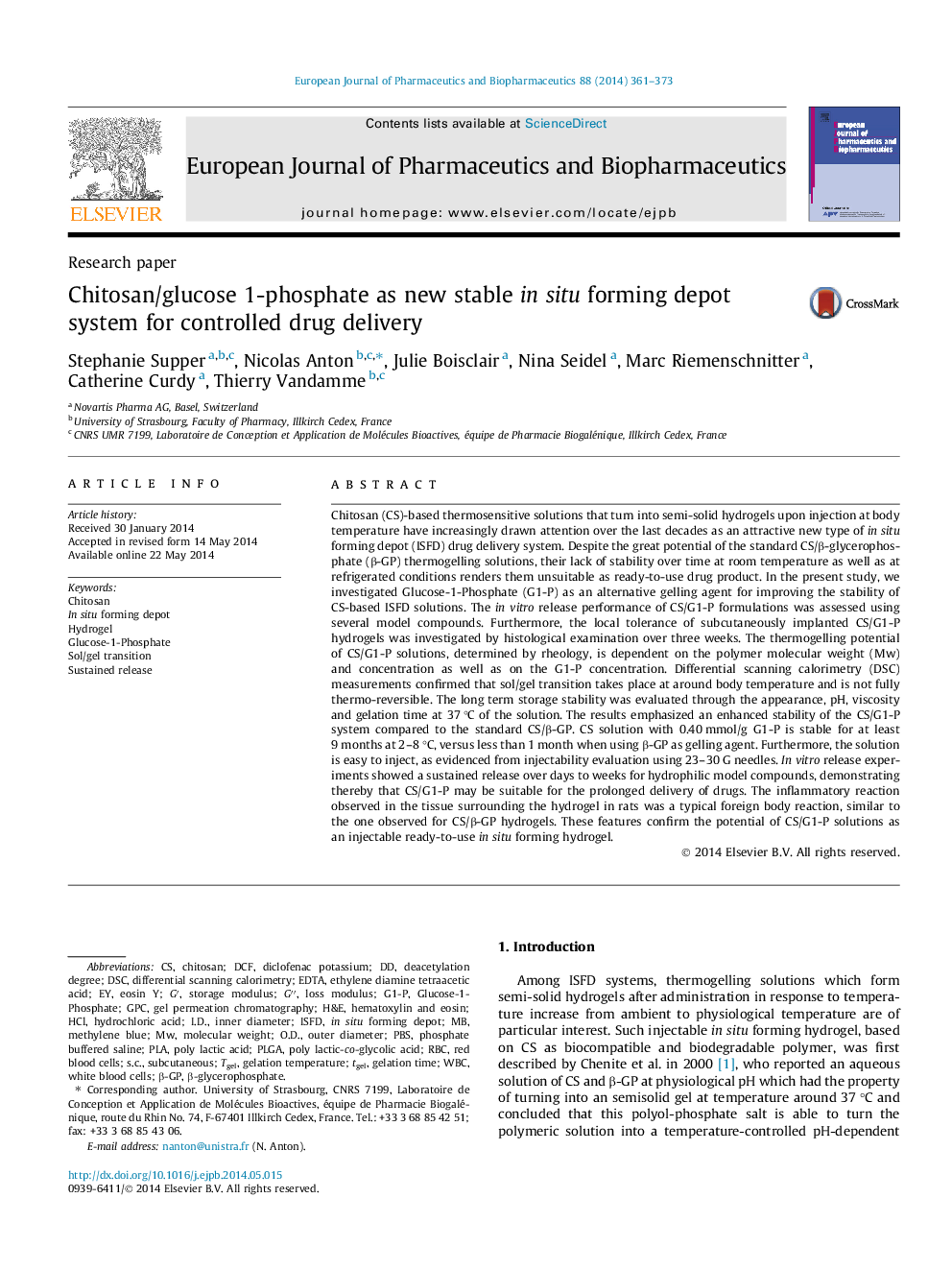| کد مقاله | کد نشریه | سال انتشار | مقاله انگلیسی | نسخه تمام متن |
|---|---|---|---|---|
| 2083817 | 1545338 | 2014 | 13 صفحه PDF | دانلود رایگان |
• CS/G1-P thermogelling solutions showed improved stability than CS/β-GP.
• Sustained release over days to weeks was observed in vivo for hydrophilic compounds.
• The hydrogels exhibit acceptable tissue biocompatibility in rats.
• CS/G1-P solution has the potential to be used as injectable ready-to-use ISFD.
Chitosan (CS)-based thermosensitive solutions that turn into semi-solid hydrogels upon injection at body temperature have increasingly drawn attention over the last decades as an attractive new type of in situ forming depot (ISFD) drug delivery system. Despite the great potential of the standard CS/β-glycerophosphate (β-GP) thermogelling solutions, their lack of stability over time at room temperature as well as at refrigerated conditions renders them unsuitable as ready-to-use drug product. In the present study, we investigated Glucose-1-Phosphate (G1-P) as an alternative gelling agent for improving the stability of CS-based ISFD solutions. The in vitro release performance of CS/G1-P formulations was assessed using several model compounds. Furthermore, the local tolerance of subcutaneously implanted CS/G1-P hydrogels was investigated by histological examination over three weeks. The thermogelling potential of CS/G1-P solutions, determined by rheology, is dependent on the polymer molecular weight (Mw) and concentration as well as on the G1-P concentration. Differential scanning calorimetry (DSC) measurements confirmed that sol/gel transition takes place at around body temperature and is not fully thermo-reversible. The long term storage stability was evaluated through the appearance, pH, viscosity and gelation time at 37 °C of the solution. The results emphasized an enhanced stability of the CS/G1-P system compared to the standard CS/β-GP. CS solution with 0.40 mmol/g G1-P is stable for at least 9 months at 2–8 °C, versus less than 1 month when using β-GP as gelling agent. Furthermore, the solution is easy to inject, as evidenced from injectability evaluation using 23–30 G needles. In vitro release experiments showed a sustained release over days to weeks for hydrophilic model compounds, demonstrating thereby that CS/G1-P may be suitable for the prolonged delivery of drugs. The inflammatory reaction observed in the tissue surrounding the hydrogel in rats was a typical foreign body reaction, similar to the one observed for CS/β-GP hydrogels. These features confirm the potential of CS/G1-P solutions as an injectable ready-to-use in situ forming hydrogel.
Figure optionsDownload high-quality image (149 K)Download as PowerPoint slide
Journal: European Journal of Pharmaceutics and Biopharmaceutics - Volume 88, Issue 2, October 2014, Pages 361–373
